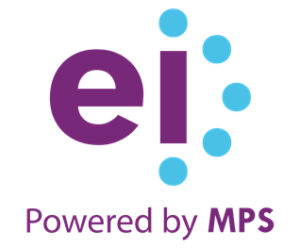Smarter Training For Much Safer Skies
Security is the lifeblood of aeronautics. Airlines and provider today face a complicated internet of regulative, technological, and functional difficulties. Training is the cornerstone that maintains teams, travelers, and properties safe, yet frequently it is fragmented, reactive, and inconsistent.
Recent cases, from tragic crashes connected to fuel system errors to wheel detachments that required emergency touchdowns, and near-misses brought on by fire occasions and drone incursions, highlight the risks. Conformity alone is no more enough. The sector requires smarter, much more resilient learning approaches.
Why Aeronautics Demands A Smarter Understanding Technique
Governing Intricacy
Aviation authorities remain to tighten oversight. In the US, the FAA has been vocal concerning exhaustion management and duty-hour restrictions. European regulators are concentrated on path safety and incident coverage standards. In the Middle East, local hubs are under boosting pressure to maintain conformity throughout huge, rapidly broadening fleets. Aligning training with these different demands is a significant obstacle.
Safety-Critical Precision
Fatigue-related errors, maintenance oversights, and path attacks stay persistent risks. With the cost of mistake so high, training must surpass expertise checks to scenario-based technique that constructs real-world preparedness.
Modern technology Improvement
AI-enabled web traffic systems, digital twins, and progressed airplane technologies are improving roles throughout trip and ground procedures. Without agile upskilling, staffs may find themselves underprepared for the very systems they should run securely.
Operational Performance Stress
Tight turn-around schedules at active European hubs or Middle Eastern transportation points leave little time for extensive training. Airline companies require modular, workflow-friendly remedies that decrease downtime without endangering roughness.
Arising Threat Classifications
From drone incursions in conflict-adjacent areas to cyberthreats targeting navigating systems, the aviation risk landscape is broadening. Training methods must evolve as swiftly as these threats.
Common Training Demands In Air Travel
Safety Training
Security is the nonnegotiable structure of aviation. Programs need to cover both core and sophisticated practices, ranging from emergency procedures and discharge drills to situational awareness and incident coverage.
Governing And Compliance Training
Necessary courses aligned with FAA, EASA, ICAO, and regional authorities. These include frequent training on duty-hour limits, equipment checks, and dealing with hazardous products.
Upkeep And Engineering Training
Hands-on simulations and refresher courses that help designers and technicians recognize part fatigue, comply with examination methods, and protect against oversights.
Protection And Airspace Safety And Security
With drone incursions and local problems impacting global airspace, specialized training is vital. Middle Eastern providers, specifically, face growing demands to address these risks in fast-expanding operations.
Modern Technology And Systems Training
Upskilling team on next-generation airplane systems, AI-enabled web traffic tools, and electronic systems that support efficiency throughout United States and worldwide paths.
Soft Skills And Passenger Experience
Cabin staff and ground personnel take advantage of training in interaction, dispute administration, and cultural level of sensitivity, guaranteeing guest trust fund and service consistency throughout global centers.
The Path Onward
In aviation, compliance is obligatory, however constructing a culture of security and readiness is what truly sets resistant companies apart. By purchasing targeted, role-specific training that attends to security, compliance, tiredness, maintenance, innovation, and traveler experience, leaders can make certain uniformity and confidence throughout their workforce.
Whether navigating regulatory needs in the US, managing intricate center procedures in Europe, or scaling fleets between East, the required is clear: training should develop to match the pace of modification in the skies.
The inquiry is no longer whether to improve air travel training. It is just how quickly leaders can act to safeguard both people and performance.
Read More:
FREQUENTLY ASKED QUESTION
Because aviation depends on stringent adherence to security methods, continuous training, and error-free operations. Without security, the whole system is at risk.
Smarter strategies like flexible training, scenario-based learning, and simulations make certain employees discover pertinent skills, apply them in real-world contexts, and maintain crucial safety knowledge.
Technologies such as Digital Truth, AI-driven personalization, and mobile learning provide immersive, adaptable, and reliable means to educate air travel experts.
They straighten training material with worldwide aviation requirements and laws, making it much easier for organizations to ensure compliance while likewise tracking and auditing discovering results.
Pilots, team, upkeep personnel, air website traffic controllers, and ground personnel all gain from targeted, role-specific training that lowers human mistake and boosts safety.
The future points toward continual, technology-enabled learning that adjusts to evolving guidelines, incorporates data-driven insights, and promotes a society of safety across the industry.

EI
EI is a mentally intelligent knowing experience design company that partners with customers in their Digital Change journey.
www.eidesign.net